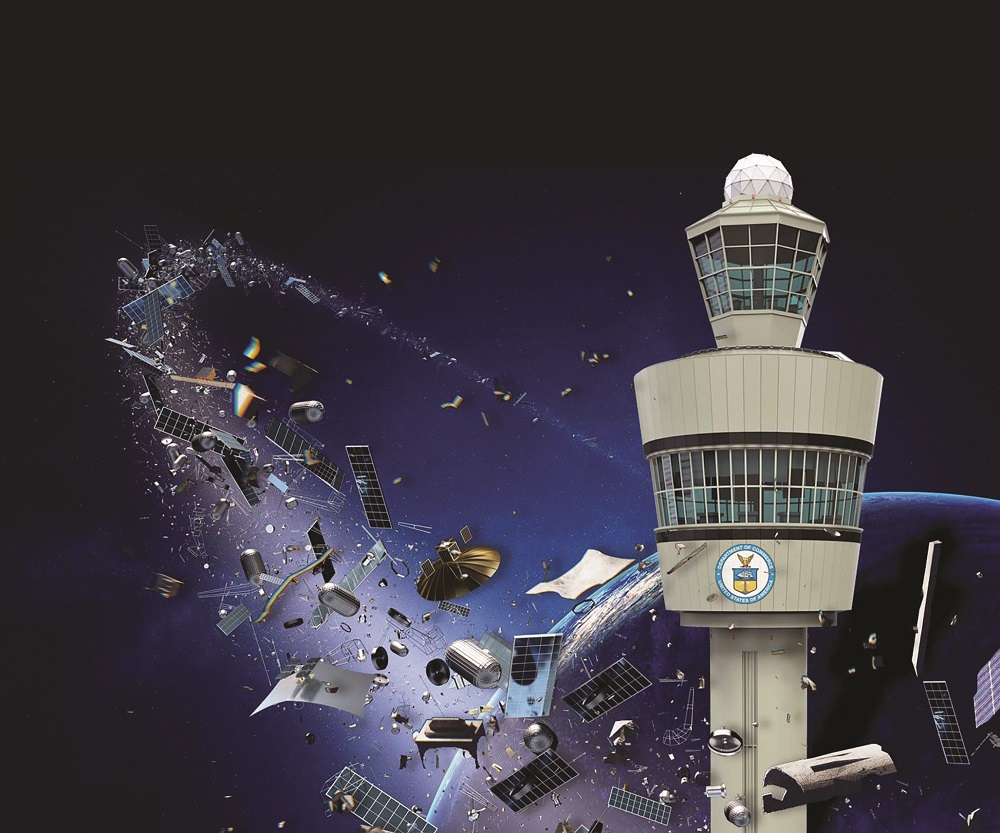NEW YORK — A bill introduced in the House to reauthorize the Federal Aviation Administration includes a provision directing the agency to get involved in space traffic management, potentially duplicating ongoing work at the Commerce Department.
The bipartisan leadership of the House Transportation and Infrastructure Committee introduced the FAA reauthorization bill June 9. The committee is scheduled to mark up the bill, advancing it to the full House, June 13.
One section, 600 pages into a 773-page bill, is intended to address risks from orbital debris reentering and passing through airspace. The bill refers to such objects as “covered airborne debris,” which is defined in the legislation as human-made objects once in orbit that have reentered uncontrollably and pose “a potential risk to the safe flight of civil aircraft in air commerce.”
The bill instructs the FAA to establish a program to track objects “that are potential sources of covered airborne debris” with a focus on identifying those about to reenter and could pose a risk to aircraft in airspace. That program would coordinate with the FAA’s air traffic control system to identify airspace that needs to be closed for a reentry.
It would allow the FAA to establish its own space situational awareness (SSA) facilities and work with other federal agencies, companies or international organizations for data on such objects.
While the focus of the bill is tracking debris to assess airspace risks, the bill does enable additional uses of the data the FAA collects. In particular, it directs the FAA to offer “a basic level of data, information, and services” at no charge. That includes maintaining a public catalog of space objects and “emergency conjunction notifications” of such objects.
That would appear to duplicate at some level what the Commerce Department is currently developing to handle civil space traffic management responsibilities assigned to it under Space Policy Directive (SPD) 3 in June 2018. The department’s Office of Space Commerce is developing the Traffic Coordination System for Space, or TraCSS, that will use SSA data from multiple sources and provide basic services, like conjunction warnings, free of charge.
The bill makes no mention of TraCSS or work being done by Commerce on space traffic management. The issue has not been the subject of hearings by the committee in this Congress. A committee spokesperson did not respond to questions June 12 about provisions in the bill.
Industry officials say they believe the intent of the provision is focused on aviation safety, and not a broader space traffic management effort. There had been policy debates for years about whether the Commerce Department, the FAA’s Office of Commercial Space Transportation (AST) or another agency should take over civil space traffic management responsibilities from the Defense Department.
That debate continued until SPD-3, when the White House selected Commerce for that role, a decision supported by an independent study in 2020 by the National Academy of Public Administration requested by Congress.
“It seems more like this is aimed at making sure the FAA/AST can fulfill its air safety mission” than reopening those debates, said Brian Weeden, director of program planning for the Secure World Foundation. However, “it does suggest that there is still some uncertainty about what data or services the Office of Space Commerce is going to provide to other federal agencies to support their own missions.”
“The proposed language in the FAA reauthorization bill should be very narrowly focused on aircraft safety in the presence of hazards posed by reentering space objects, given that the role for STM has already been assigned to DoC,” said Dan Oltrogge, chief scientist for SSA company COMSPOC.
“Apart from orbital and positional information concerning reentering objects that could be obtained from DoC, there is no need for FAA to maintain a separate catalog for on-orbit resident space objects or to generate emergency conjunction notifications for orbital objects, as these responsibilities are to be managed by DoC per SPD-3,” he added.
The SSA section is the most substantive section in the bill related to space. Other sections of the report address minor issues regarding commercial space transportation statistics, spaceport reports and codifying an agreement between the FAA and National Transportation Safety Board on roles and responsibilities for commercial spaceflight accident investigations. The bill notably does not address the “learning period” that restricts the FAA’s ability to enact safety regulations for spaceflight participants; that restriction is set to expire Oct. 1.
